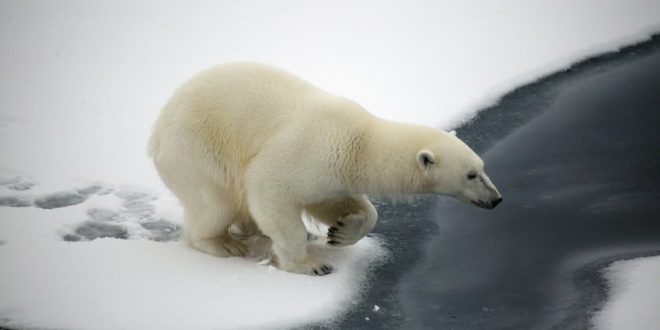The future of the polar bear is under threat from dangerous chemicals polluting the Arctic ecosystem.
Environmental regulations that came into force decades ago are reducing some toxic Persistent Organic Pollutants (POPs) in the Arctic, but others are on the rise to take their place as regulations fail to keep pace with chemical manufacturers.
A study published in the journal Environmental Toxicology and Chemistry looked at 19 groups of chemicals at the top levels of the Arctic food chain: Arctic cod, ringed seals and polar bears.
While polar bear cubs are exposed to the highest levels of POPs, adult polar bears are also receiving more than 100 times more than the estimated safety threshold of POPs. Seals, on the other hand, are faring relatively well and are exposed to safety levels below this threshold.
Sara Villa, co-lead author of the Environmental Toxicology and Chemistry study, said: “This work is the first attempt to quantify the overall risk of POPs for the Arctic ecosystem and to define a ranking in order to highlight the most dangerous chemicals in the mixture.”
Polar bear cubs poisoned to death
And according to fellow co-lead author Marco Vighi: “The results demonstrate that international control measures are effective at reducing the risk to ecosystems. “Nevertheless it is fundamental to continuously implement the control of new and emerging contaminants.”
International control measures introduced since the 1980s have seen a decrease in risk from previously known POPs but the risk from new ones, such as perfluorooctane sulfonate, is on the rise.
POPs found in the Arctic include heat resistant chemicals, industrial by-products such as dioxins and pesticides like DDT and lindane.
Reducing risk
The study’s co-lead author Marco Vighi: “The results demonstrate that international control measures are effective at reducing the risk to ecosystems.
“Nevertheless it is fundamental to continuously implement the control of new and emerging contaminants.”
According to the World Wildlife Fund, Polar bears are exposed to high levels of these pollutants through their food.
For adult bears, it can affect growth, reproduction and the ability to fight off disease.
For bear cubs, high levels of the pollutants in their mother’s milk can poison and kill them.
Agencies/Canadajournal
 Canada Journal – News of the World Articles and videos to bring you the biggest Canadian news stories from across the country every day
Canada Journal – News of the World Articles and videos to bring you the biggest Canadian news stories from across the country every day



